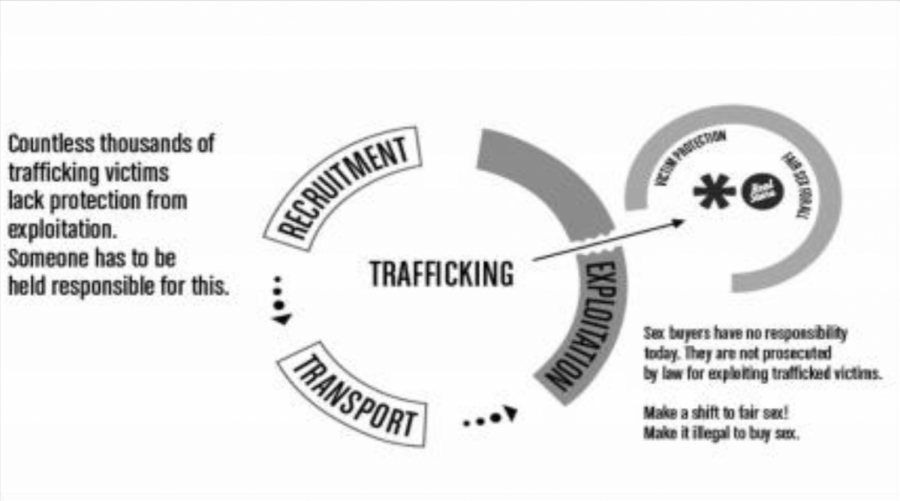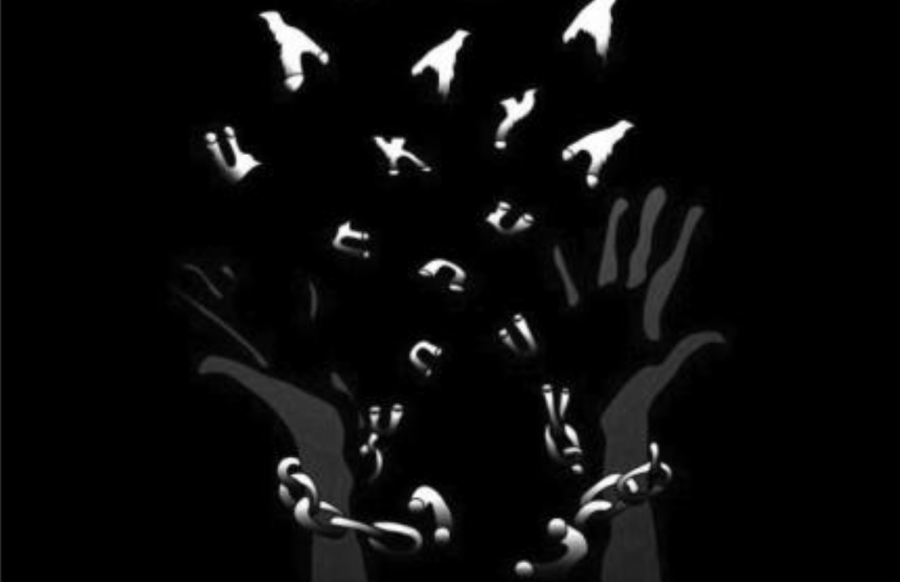Slavery and abolition in the modern day
December 8, 2016
Modern slavery, a mounting epidemic
Courtesy Wikimedia Commons
The cycle of recruitment, transport, and exploitation is used to abuse women and children. The average age of those that enter the sex trade is between 14 and 16.
In school, students learn that slavery was abolished in the United States with the 13th Amendment, over 150 years ago. However, there are nearly 30 million people across the world living in slavery today, according to the Borgen Project, an organization that works to address the global poverty and slavery.
Modern slavery is a worldwide phenomenon, seen in both wealthy and downtrodden areas.
The Walk Free Global Slavery Index ranks 162 countries based on several factors including a country’s estimated slavery prevalence by population. The United Kingdom, Iceland and Ireland tie with 160 on the scale, the best ranking. However, slavery still exists in these nations; the United Kingdom is estimated to have over 4,000 enslaved victims.
Even in the United States, “the land of the free,” there are an estimated 60,000 people enslaved.
There are over 14 million people enslaved in India, the largest number of any country. Mauritania has the largest number per capita, with approximately 4 percent of their population enslaved.
Modern slavery comes in many different forms and slaves are used to serve many different purposes.
The organization End Slavery Now breaks modern slavery into six categories: domestic servitude, sex trafficking, forced labor, bonded labor, child labor and forced marriage.
Domestic servitude is a form of forced labor used to cover up the exploitation of an individual, commonly from another country.
Sex trafficking is another form of slavery, in which men, women and children are forced to perform sexual acts. There are an estimated 4.5 million victims worldwide.
Forced labor encompasses several forms of slavery. Victims of it are forced to work without pay to provide labor or sex, often for the profit of a large business or government.
Bonded labor occurs when people must work to pay off a personal or inherited debt. It can begin to just pay off the loan, but may lead to permanent slavery if the paying off the loan becomes impossible.
Child labor accounts for over 25 percent of the world’s slaves today. Children are forced to perform sexual acts or work for the profit of someone else under horrible conditions, including starvation and physical abuse.
Forced marriage is the most unknown type of slavery because it is usually undocumented and unofficial. Statistics on it vary, but it is known to be common in Africa, eastern Europe and South Asia.
The term human trafficking is also commonly used in connection with modern slavery. Though the two phrases are virtually synonymous, human trafficking emphasizes the recruiting, harboring and transporting of those enslaved. The modern world has changed the way people can be “recruited” for slavery, especially with the rise of social media.
Modern slavery is a delicate issue that may seem uncommon and hard to solve in today’s world. However, to truly live up to being “the land of the free,” it is an issue that needs to be addressed in the United States and abroad.
Modern Abolitionists Club, advocates in our community
Courtesy Bethany Hickman
The Modern Abolitionist Club logo represents the realization of freedom from slavery.
Just as our ancestral abolitionists in past centuries worked to create equality and earn freedom for all peoples, modern abolitionists are continuing to do the same.
Slavery is still a global issue today, and affects more than 30 million people worldwide. However, like-minded people have banded together to tackle this crisis: the Modern Abolitionist Movement, or MAM.
The modern abolitionist’s cause is to completely end the ancient crime of slavery once and for all, and to free the millions of people captured by its torment. Modern slavery is a global issue, and as such, the global community is working together to end it. Groups such as Anti-Slavery International, the American Anti-Slavery Group, International Justice Mission and Free the Slaves all work to spread awareness around the globe and get funding to help enslaved peoples.
There are also local organizations all over the United States that deal with the issue on a provincial level. Cincinnati has multiple modern abolitionist group such as End Slavery Cincinnati, but there is a group even closer to home: Walnut Hills High School’s very own MAM club.
“Our main [purpose] is advocacy, we make sure that people know about [modern slavery] because that’s one of the biggest issues, is that not many people know it exists,” SENIOR Jessica Kavinsky, head of the MAM club, said.
The MAM club hosts screenings, discussion panels and speakers from different organizations around Cincinnati to increase awareness of the subject and helps raise funds that they donate to End Slavery Cincinnati. End Slavery Cincinnati also helps the MAM club in organizing events.
MAM spreads awareness on every type of modern slavery, but heavy focus is put onto sex slavery and forced labor, as those are the most common types. On Jan. 18th, MAM is hosting a discussion panel on sex slavery at WHHS to help inform more people around the issue.
Ohio is also one of the largest trafficking areas in the country.
“It happens in your own backyard. Cincinnati is one of the biggest traffickers and [I-71] is really bad with picking up students and young girls,” Kavinsky said.
High school students can help the abolitionist cause as well. By educating themselves about the issue, being aware of it and spreading that awareness and recognizing it is a real problem that exists, they can “bring information to their leaders and petition and get legislation passed and fundraiser and work with other organizations.” Kavinsky said.
Although slavery was legally abolished around the world many years ago, it is still a global issue that many are unaware of. MAM works to teach people about this issue and how they can help finally rid this crime from the rest of history.

